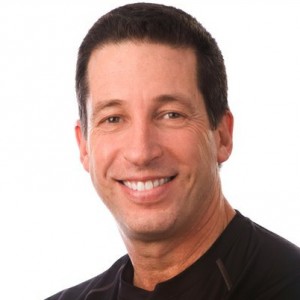Breath properly for resistance training
 At one time or another we have all been “that” person. You know, the one who is on their last several reps of any weight lifting or calisthenic movement with straining neck muscles, beet red face and blood vessels that look like vines jumping out of your skin.
At one time or another we have all been “that” person. You know, the one who is on their last several reps of any weight lifting or calisthenic movement with straining neck muscles, beet red face and blood vessels that look like vines jumping out of your skin.
Finally, you give yourself permission to breathe – more like, gasp as you completed your set. In that one cycle, several critical things happened – the most significant and potentially destructive being an increase of pressure in your brain, eyes and chest (thoracic) cavity.
The scientific name for this event is the “Valsalva Maneuver” – a term used to describe forcibly trying to exhale against a closed airway. For most people, this is an automatic reflex that allows for “tightening” or hardening of our core an effort to overcome a force or brace for impact.
When it comes to supporting the torso and spine, most of us perform the Valsalva Maneuver to compress the soft tissues that surround the spine in anticipation of an event where we anticipate a need to “brace” the body.
Whether you are weight lifting, moving a couch or picking up a heavy box, the Valsalva Maneuver reflex is difficult yet in most instances, important to avoid.
The forceful exhalation against a closed throat can create enough pressure in the chest cavity to constrict the return of blood to the heart, and slow down the rate and amount of blood available to receive a fresh supply of oxygen.
For individuals who are hyper tense (high blood pressure) the Valsalva Maneuver is a response to resistance that is best to avoid. Those individuals who suffer from glaucoma (above normal outward pressure in the eyes) and vulnerable to intra-cranial (inside the head) bleeding should also practice caution in an effort to avoid this increase in internal pressure.
When performing resistance training in the gym, a key component to lowering internal body pressure is to exhale through the muscle shortening or concentric portion of the lift. An example of this during a biceps curl would be exhaling as the weight is brought to the shoulder, and then inhaling as the weight is lowered.
Practicing this technique of breath control also stops a person from lifting too fast, which would force a person to inhale and exhale at a rate that couldn’t send an adequate supply of oxygen-rich blood to the muscles.
One aspect of the Valsalva Maneuver that some strength coach’s deem more acceptable, but open to debate, involves employing this technique for lifts that make the spine vulnerable.
In other words, it is better to actually perform this breath-holding technique as a means of stabilizing the spine when there is no gym apparatus to do so, such as a bench of chair with back support.
Many strength coaches believe that movements such as the back squat, front squat, dead lift, and assorted Olympic style lifts are best performed by holding the breath until the weight has reached it’s highest point off the ground, and then inhaling quickly as the weight is lowered.
Lifting in this manner, allows more powerful contraction of those muscles that support the spine and arguably, supply a greater platform for spinal stability. Opponents to this specific technique argue that the well trained athlete should be able to tighten their core muscles voluntarily, while performing exhalation during the most difficult portion of the lift.
Proper weight lifting and activities of daily life in which we must overcome resistance (work) to get the job done require technique. While it is easy to become obsessed with the mechanics it is equally critical to keep our bodies internal pressures down, by remembering to exhale through the part of the movement where the greatest effort is required.
